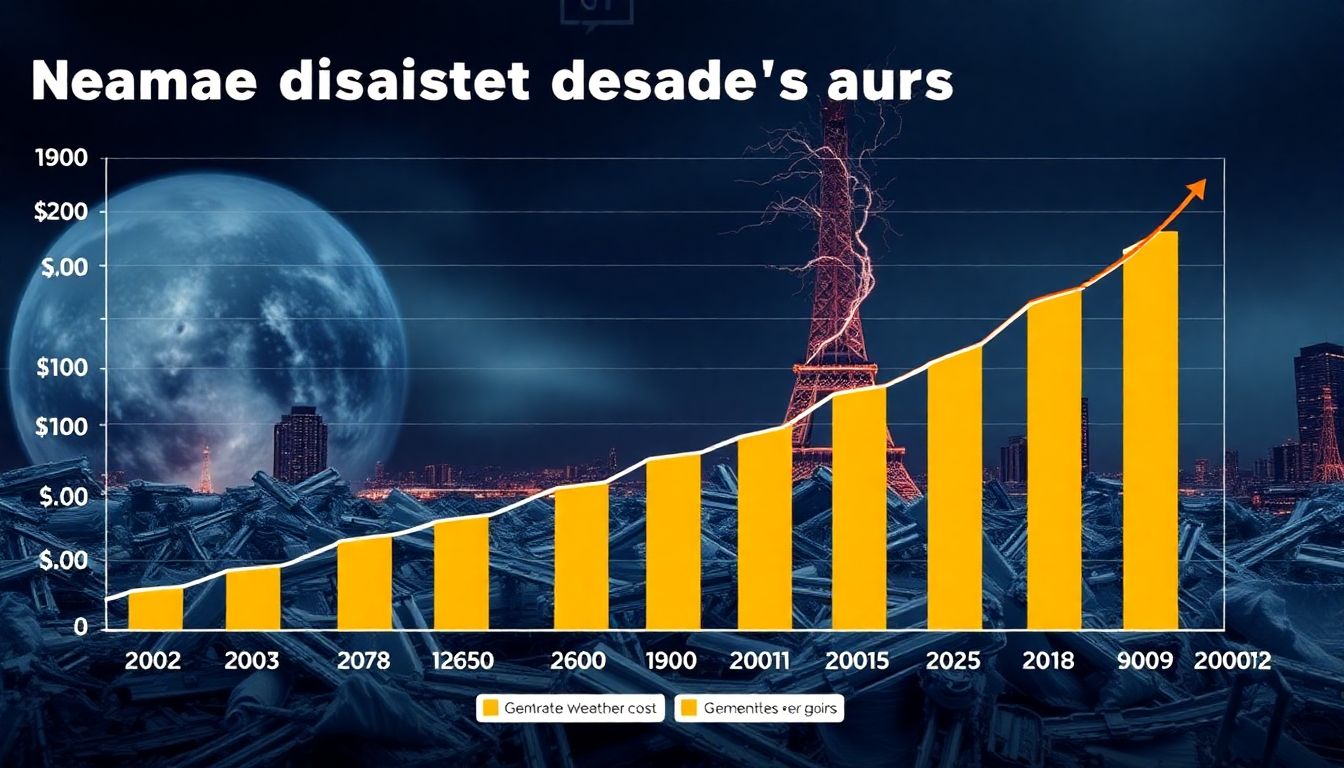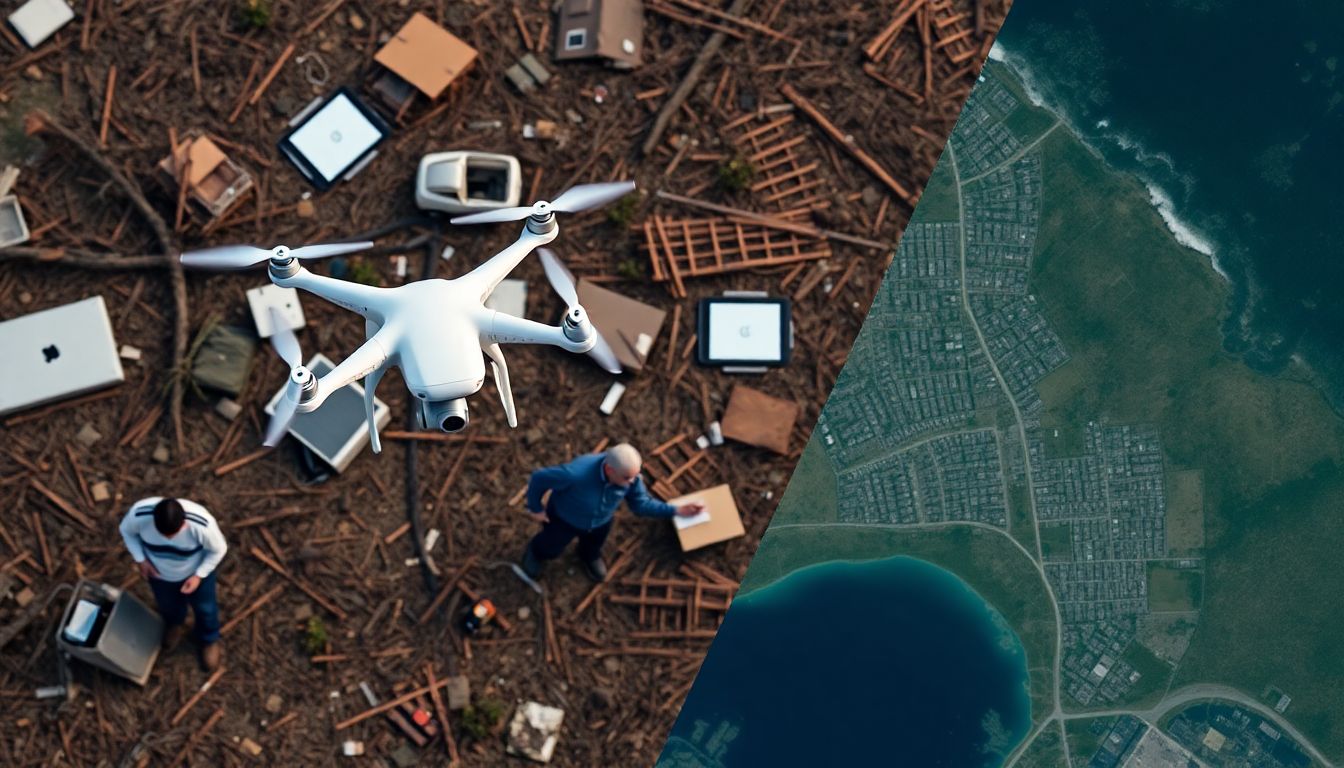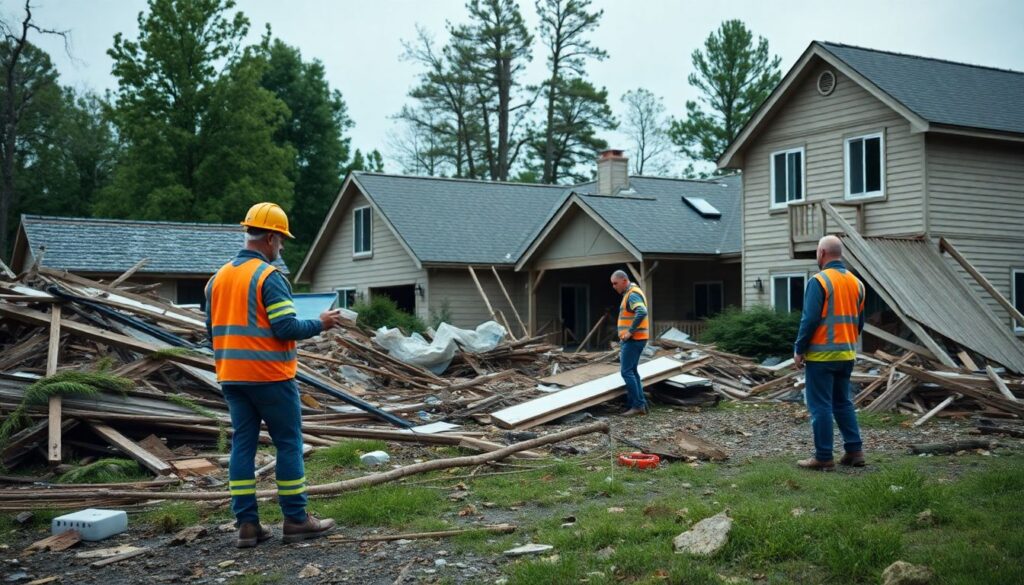Welcome to this insightful exploration of natural disasters and their impact on business continuity, particularly focusing on the insurance industry’s role in ensuring service continuity. This article will delve into the rising frequency and severity of natural disasters, the challenges they pose, and the strategies insurers can employ to manage and mitigate these risks effectively.
Navigating the Challenges and Solutions in the Insurance Industry
In the wake of a catastrophic natural disaster, the landscape is a mix of debris and disarray, painted with nature’s brutal strokes. Amidst the chaos, figures in reflective vests and hard hats move purposefully—these are the insurance adjusters, the frontline soldiers tasked with translating tragedy into figures and figures into relief. Armed with tablets and smart devices, they capture images, input data, and feed it instantly to sophisticated algorithms miles away, which crunch the numbers and begin to estimate the cost of recovery.
The claims process is no longer a mere pencil-pushing endeavor but a harmonious blend of human effort and technological prowess. Drones buzz overhead, surveying the damage from a bird’s-eye view, while adjusters on the ground use advanced imaging tools to peer through the devastation, seeing what the naked eye might miss. Together, they form a symphony of efficiency, ensuring that no detail, no matter how small, is overlooked.
Back at the command center, data scientists and analysts huddle over screens, interpreting the real-time data feeds and satellite imagery. They collaborate with the adjusters on the ground, guiding their actions and providing valuable insights. This seamless dance between technology and human effort is what makes the modern claims process a beacon of hope amidst the wreckage, turning data into dollars, and dollars into the lifeline that communities need to rebuild and rise again.

The Rising Tide of Natural Disasters
In recent decades, the world has witnessed an alarming increase in the frequency and severity of natural disasters. According to the World Meteorological Organization, the number of weather-related disasters has increased by a factor of five over the past 50 years. From 1970 to 2019, weather, climate, and water-related disasters accounted for 50% of all disasters, 45% of all reported deaths, and 74% of all reported economic losses. This escalation is not merely a coincidence; scientists widely agree that it is closely linked to climate change.
The link between climate change and the intensification of natural disasters is well-documented. The Intergovernmental Panel on Climate Change (IPCC) reports that global warming is leading to more frequent and severe heatwaves, storms, droughts, and wildfires. For instance, the National Oceanic and Atmospheric Administration (NOAA) has reported that the Atlantic hurricane season has seen an increase in the number of major hurricanes (Category 3 or higher) in recent years. Additionally, the California Department of Forestry and Fire Protection has recorded that five of the state’s largest wildfires in history have occurred since 2018.
The escalating frequency and severity of natural disasters have significant financial implications for the insurance industry. According to Swiss Re, a global reinsurance company, total economic losses from natural catastrophes and man-made disasters in 2021 amounted to $270 billion, of which $120 billion were covered by insurance. This marks a significant increase from the annual average of $190 billion in total economic losses and $81 billion in insured losses over the past decade. The insurance gap, the difference between total economic losses and insured losses, remains substantial, particularly in emerging markets.
Looking ahead, the outlook presents both challenges and opportunities for the insurance industry. Aon, a leading global professional services firm, predicts that annual global economic losses from natural disasters could reach $340 billion by 2050 due to climate change and urbanization. To remain resilient, insurance companies are exploring innovative solutions such as:
- Enhancing risk modeling and analytics to better understand and price climate risks.
- Developing new insurance products and services to close the protection gap.
- Investing in sustainable infrastructure and technologies to mitigate the impacts of natural disasters.
- Collaborating with governments, businesses, and communities to build resilience and promote climate adaptation.
By taking proactive steps, the insurance industry can play a pivotal role in managing the financial impacts of natural disasters and supporting the transition to a more sustainable and resilient future.

The Insurance Industry’s Role
The insurance industry plays a critical dual role in our society, acting as both a provider of financial protection and a manager of claims. On one hand, insurance companies offer a safety net, giving individuals and businesses the confidence to navigate life and operations without the constant fear of financial ruin. They provide coverage for a wide range of risks, from natural disasters to health issues, car accidents, and liability claims. On the other hand, they manage claims efficiently, ensuring that funds are dispersed fairly and promptly when incidents occur. This dual role is vital for economic stability and recovery after unexpected events.
However, the insurance industry faces significant challenges, especially when there’s a surge in claims. Natural disasters, pandemics, and economic downturns can lead to an influx of claims, putting immense pressure on insurance companies. These surges can strain resources, leading to delays in processing times and potential discrepancies in payouts. For instance, the COVID-19 pandemic resulted in an unprecedented number of claims across various insurance sectors, highlighting the need for robust systems and strategies to manage such events effectively.
Preparedness is key in the insurance industry, and companies must have plans in place to handle surges in claims. This includes:
- Investing in advanced technologies like AI and machine learning to automate processes and predict claim trends.
- Maintaining a well-trained workforce that can scale up during high-claim periods.
- Developing clear communication strategies to keep policyholders informed during crises.
- Building strong reinsurance partnerships to share risks and mitigate financial impact.
The insurance industry’s ability to provide coverage and manage claims efficiently, especially during surges, is crucial for maintaining trust with policyholders and ensuring long-term success. By prioritizing preparedness and continuous improvement, insurance companies can navigate challenges, meet customer expectations, and foster resilience in the face of uncertainty. This not only benefits the industry but also contributes to the overall financial health and security of societies.

Key Hurdles and Solutions
Managing natural catastrophe losses presents a triad of key hurdles that, when addressed effectively, can significantly mitigate the impact on communities and economies. The first of these challenges is having eyes and ears on the ground. When a disaster strikes, obtaining real-time, local intelligence is crucial. However, with infrastructure often compromised, this can be easier said than done. To tackle this, deploying advanced technologies like drones and satellite imagery can provide invaluable insights. Additionally, empowering local communities with training and resources to establish volunteer networks can greatly enhance on-ground reporting. These volunteers, equipped with basic technology like smartphones, can provide timely updates, ensuring that response efforts are targeted and efficient.
The second key hurdle is the availability of accurate information. In the aftermath of a natural catastrophe, misinformation can spread rapidly, creating confusion and hindering rescue and relief efforts. To combat this, establishing a centralized, reliable source of information is paramount. This can be achieved through:
- Setting up official websites and social media channels dedicated to disaster updates.
- Collaborating with telecommunication providers to send out accurate, real-time alerts.
- Partnering with local media outlets to ensure consistent and correct information dissemination.
The third major challenge is speeding up the settlement process. For those affected, every minute counts, and delays in settlements can exacerbate their hardship. To expedite this process, insurance companies can adopt:
- Automated claims processing systems.
- On-ground fast-track claim centers.
- Proactive communication to keep policyholders informed about their claim status.
Lastly, it’s vital to remember that behind every claim is a person or a family who have just gone through a traumatic experience. Therefore, empathy and communication are essential. Insurance companies should train their staff to handle these situations with the utmost sensitivity. Providing clear, regular updates and offering support services, such as counseling, can make a significant difference in the lives of those affected. By embracing these solutions and prioritizing empathy, we can overcome the key hurdles in managing natural catastrophe losses, leading to more resilient communities and a swift recovery process.

Preparing for the Future
The insurance industry, a critical linchpin in the recovery and resilience of communities affected by natural disasters, is facing an era marked by the increasing frequency and severity of these events. To prepare for this challenging future, insurance companies must embrace a multipronged approach that leverages cutting-edge technology, prioritizes accurate data management, and implements proactive measures.
Technology stands at the forefront of this preparedness revolution. Insurers should invest in advanced analytics, artificial intelligence (AI), and machine learning (ML) to enhance predictive modeling and risk assessment. For instance, AI-driven satellite imagery and geospatial analytics can provide real-time insights into potential risk zones, enabling insurers to better assess and price policies. Additionally, the Internet of Things (IoT) can offer valuable data from sensors and devices on the ground, further enhancing the industry’s ability to anticipate and respond to disasters.
Accurate data management is equally crucial for bolstering the industry’s resilience. Insurers should focus on gathering and managing high-quality data to inform their decision-making processes. This includes historical disaster data, policyholder information, and real-time weather and climate data. By integrating these data sources, insurers can:
- Enhance the accuracy of their risk models
- Improve the precision of their underwriting processes
- Facilitate the swift and efficient settlement of claims in the aftermath of a disaster
Furthermore, collaborations with public and private sector entities can help insurers access even more robust data, fostering a comprehensive understanding of risks.
Proactive measures are essential for mitigating the impact of natural disasters. Insurers should work closely with policyholders, providing them with education and resources to strengthen their properties and reduce potential losses. This could involve offering:
- Discounts for homes and businesses that implement risk-reduction measures
- Partnering with contractors to provide affordable property reinforcement services
- Developing public awareness campaigns to educate communities about disaster preparedness
Moreover, insurers should engage in continuous dialogue with policymakers to advocate for infrastructure investments and land-use policies that prioritize resilience. Lastly, the industry must embrace a culture of continuous improvement and adaptation. As the landscape of natural disasters evolves, so too must the strategies and tools employed by insurers. Regularly reviewing and updating risk models, investing in new technologies, and fostering a flexible, innovative mindset will be key to navigating this dynamic challenge.
FAQ
How does climate change influence the frequency and severity of natural disasters?
What are the main challenges faced by the insurance industry in managing natural disaster claims?
- The sheer volume of claims, which can be overwhelming.
- The need for rapid and accurate assessments of damage.
- Ensuring that claims are settled quickly and efficiently.
- Dealing with the emotional and personal impact on both clients and adjusters.
How can technology aid in the claims process during natural disasters?
- Real-time monitoring and assessment through satellite imagery and drone footage.
- Quick and accurate data collection and analysis.
- Enhanced communication and coordination among adjusters and clients.
- Predictive analytics to anticipate and prepare for future events.
What steps can businesses take to ensure continuity of service during natural disasters?
- Obtaining sufficient insurance coverage.
- Developing and implementing disaster recovery plans.
- Regularly updating business interruption figures.
- Maintaining accurate and detailed records of business performance.
- Communicating clearly and empathetically with insurers and clients.
How can the insurance industry improve its response to natural disasters?
- Investing in advanced technology for monitoring and assessment.
- Ensuring accurate and timely information is available.
- Streamlining the claims process to speed up settlements.
- Providing training and support for adjusters to handle the emotional and personal impact of disasters.
- Continuously reviewing and adapting strategies based on past experiences and future predictions.









